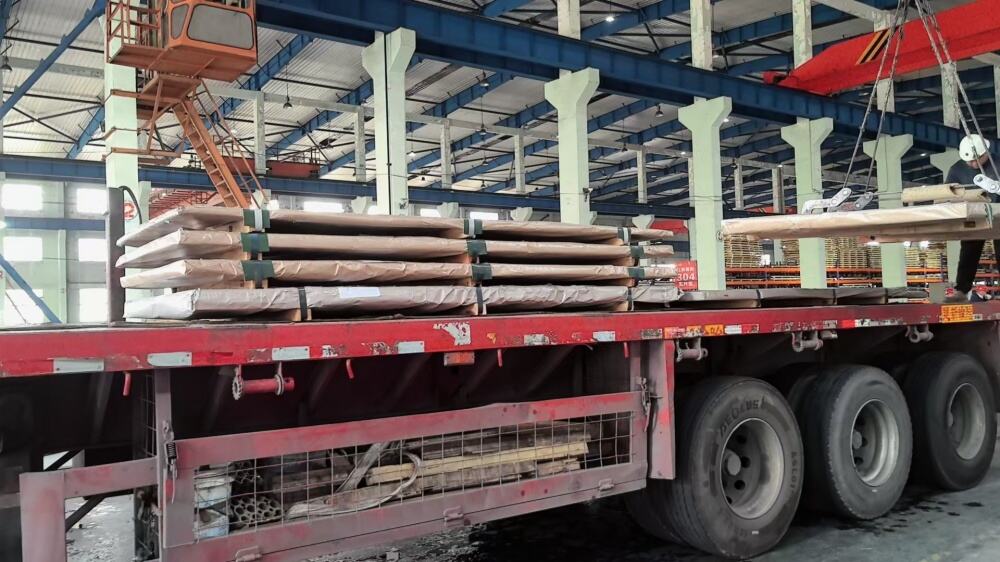Stainless steel is widely used in all walks of life. Among the many types of stainless steel, 420 stainless steel and 304 stainless steel are the two most common types. Although they both belong to the stainless steel family, there are also some differences. This article will describe the differences between 420 stainless steel and 304 stainless steel in detail from multiple angles to help everyone better understand these two stainless steel materials.
Stainless steel can be divided into five categories according to its metallographic structure: austenitic, ferritic, martensitic, duplex and precipitation hardening. Among them:

420 stainless steel is a martensitic stainless steel with high hardness, good corrosion resistance and excellent machinability. It belongs to the high-carbon stainless steel series. After proper heat treatment, it can obtain very high strength and hardness. Therefore, it is often used in fields with high hardness requirements, such as knives, scissors, surgical instruments and industrial machinery parts.
304 stainless steel is the most commonly used austenitic stainless steel. It has excellent corrosion resistance and processing performance and cannot be strengthened by heat treatment. 304 stainless steel is suitable for tableware, kitchen utensils, architectural decoration, medical equipment and other occasions with high requirements for hygiene and corrosion resistance.
|
Grade |
C |
Mn |
P |
S |
Si |
Cr |
Ni |
Mo |
|
420 |
≤0.15 |
1.00 |
0.04 |
0.03 |
1.0 |
12.00-14.00 |
≤ 0.75 |
≤ 0.50 |
|
304 |
≤0 .08 |
≤2.0 |
≤0.045 |
≤ 0.03 |
≤1.0 |
18.0-20.0 |
8.0-10.5 |
- |
 420 martensitic structure:
420 martensitic structure:
420 stainless steel has a ferrite and pearlite structure in the annealed state, and can obtain a martensitic structure through heat treatment. Martensite is a hard and brittle structure that can reach a very high hardness (up to 50HRC or more) through quenching.
 304 austenitic structure:
304 austenitic structure:
304 has a stable austenitic structure, and will not undergo martensitic transformation even in low temperature environments, so it has good toughness and ductility. Its structural stability is also the basis of its excellent corrosion resistance.
|
Property |
420 Stainless Steel |
304 Stainless Steel |
|
Tensile Strength (MPa) |
700–1000 |
520–750 |
|
Yield Strength (MPa) |
500–800 |
≥205 |
|
Elongation (%) |
10–20 |
≥40 |
|
Hardness (HRC) |
48–56 (after heat treatment) |
≤20 (annealed) |
|
Impact Toughness |
Low |
High |
|
Magnetic Properties |
Magnetic (in all states) |
Non-magnetic (annealed), may become slightly magnetic after cold working |
It can be seen that 420 has high hardness and strength in the quenched state, and is suitable for use as a tool material; while 304 is more suitable for cold processing, stretching, welding and other processes due to its high ductility and good toughness.
304 stainless steel forms a dense and stable chromium oxide passivation film due to its high Cr and Ni content. It can provide excellent corrosion resistance in most weak acid, weak alkali, salt water, and hot and humid environments. It is particularly suitable for food processing, medical treatment, marine environments, etc.
420's corrosion resistance is far inferior to 304, and it only performs well in dry, weakly corrosive environments. If used in a humid or acidic or alkaline environment, it is very easy to rust. Although the corrosion resistance can be improved by polishing or surface coating, the intrinsic corrosion resistance is still limited.
420 has good heat treatment responsiveness. Usually, the hardness and strength are improved through the quenching + tempering process. After quenching at 1050~1100℃, a martensitic structure can be obtained, and then tempered at 200~400℃ to adjust the hardness and toughness.
304 stainless steel is an austenitic structure. Its hardness cannot be increased by heat treatment. It can only be slightly increased by cold processing (such as cold rolling and stretching). Therefore, it is often necessary to thicken or cold process to strengthen it when used on structural parts.
420 stainless steel: good processability before heat treatment, difficult to process after hardening, suitable for secondary processing such as grinding;
304 stainless steel: good processability, can withstand various cold bending, stamping, welding and other operations, widely used in structural parts and container manufacturing.
420 has poor weldability and requires preheating and post-heat treatment to avoid cracks;
304 has excellent weldability and does not require preheating. It is suitable for TIG, MIG, spot welding and other methods. It is widely used in stainless steel pipes, frames and plate connections.
Under the same market conditions, the price of 420 stainless steel is usually lower than that of 304. The main reasons are as follows:
304 is relatively expensive due to the shortage of nickel resources, complex smelting process and high demand, but its application field is wider and its cost performance is still excellent.
This is especially important in places that are sensitive to magnetism (such as certain instruments, nuclear power, and electronic equipment).
304 is a food-grade stainless steel that meets international standards (such as ASTM A240, GB 4806) and is widely used in cookware, food containers, medical devices, etc. Due to the characteristics of high carbon and martensitic structure, although some models of 420 can also be used for tableware, the overall food contact safety is not as good as 304.
Which stainless steel to choose can be determined based on the following factors:
In actual applications, the use environment, required performance, budget cost and other factors should be considered comprehensively, and the appropriate type of stainless steel should be reasonably selected to ensure the use effect while achieving the best cost performance.
HNJBL is a professional steel manufacturer and supplier. Our company's main products include carbon steel, stainless steel, wear-resistant steel, steel profiles, coated steel, etc. Complete specifications, stable quality, and sufficient quantity.
 Hot News
Hot News2025-06-10
2025-06-04
2025-05-26
2025-05-19
2025-05-14
2025-05-06

Copyright © Henan Jinbailai Industrial Co.,Ltd. All Rights Reserved - Privacy Policy